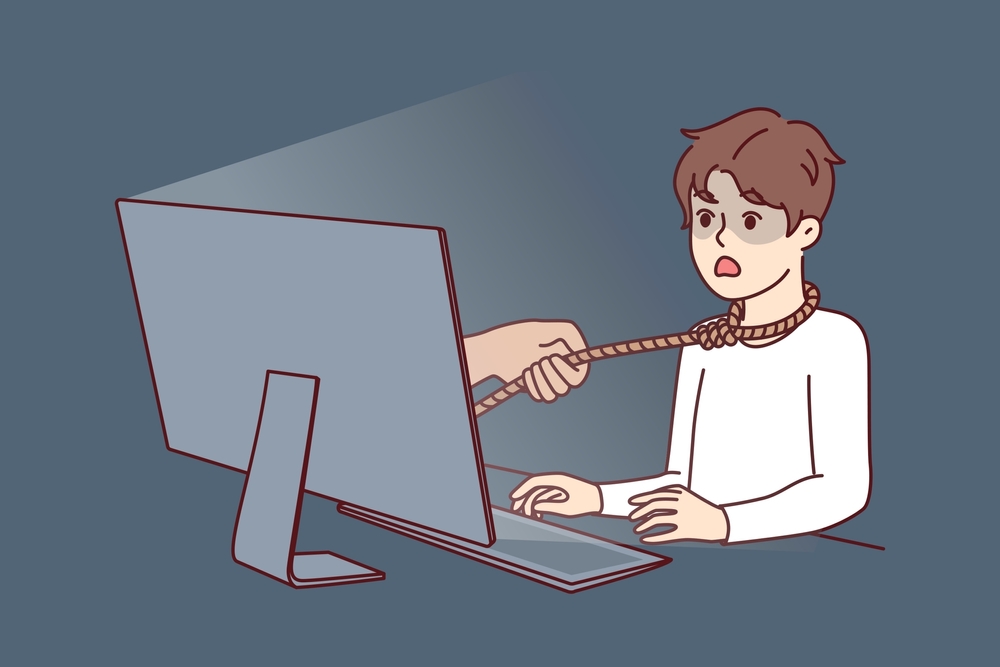As the world gets more and more immersed in the digital society, India has also seen an increase in advanced technological crimes. One of the best examples of this is the concept of “digital arrest,” a fraud that shames its victims due to the widespread lack of understanding about legality and law enforcement. The physical fear of being arrested by law enforcement agencies is the general perception of arrests. However, in this age of virtual scams, almost everyone is a victim of panic attacks created and sustained by criminals without physical contact with the victims, thanks to the arrest by an apparent digital means instilled by fear. This post further discusses the scope of “Digital Ads” in India, its working, effects and remedies.
What is Digital Arrest?
The phrase ‘digital arrest’ is used to describe a particular type of fraud in which swindlers impersonate law enforcement authorities and deceive the victim into thinking that he will be arrested for serious crimes, such as money laundering, drug dealing, or organized fraud. The term also refers to the way in which the victim is made to feel that a real physical arrest is about to take place, which is then designed to extort or make a financial loss.
Vulnerable victims are contacted and tricked into fake video calls on apps such as WhatsApp or Skype and are shown bureaucrats of a certain rank such as invigilators of the Central Bureau of Investigation, police or customs officials, or judicial officers. To reinforce the legal threat, these con men often have a fake id card, wear an official dress, carry props, and other phony documents.
Modus Operandi
The con of digital arrest scams has a cause for all the planning that goes into carrying one out. Cong artists do this in several ways:
False Allegations: Accusations are made to the victims including serious crimes like tax fraud and drug trafficking with money laundering activities being part of the accusations. These quickly instill fear and create chaos.
Video Calls as a Weapon of Encouragement: Fraudsters make video calls, show false arrest sheets, legal papers and even court sessions that are not real. The victims are also made to wear their cameras and microphones so that they are monitored and afraid of talking to other people.
Persuasion to Remit Money: Victims are threatened with arrest and advice to deposit the funds into foreign accounts or cryptocurrency or purchase gift cards for payment. Scammers will ask for a deposit as verification for “Release of funds by RBI” or to settle claims which are fronts for swindling huge amounts.
case in point is of an 82-year-old businessman from Ludhiana who was cheated ₹7 crores after swindlers made him believe he was investigated in a money laundering scam. She lost ₹60 lakh to con men impersonating Telecom Regulatory Authority of India (TRAI) officials and alleging her to be part of unlawful activities in another case based in Noida.
Key Targets
Digital arrest scams are aimed at a wide variety of audiences, such as:
Former Civil Servants: The con artists study the victims’ social media accounts in detail, and use this information to develop plausible stories and claims.
Elderly people: It is also commonplace for the scam more so to the older generation as they do not use technology much so they do not know the legal processes associated with it.
White-collar Workers: No professions are safe from these scams, including physicians, engineers, educators, and in this case, even students. To illustrate, an incident in Indore involved a postgraduate medical student becoming a victim of this fraud.
Affluent People: Emphasis is laid on defrauding wealthy people and the kodakura scheme example involved examining addresses of courier services such as FedEx to advance the scheme.
Psychological and Emotional Impact
The dread created by arrest scam through digital channels can oftentimes culminate in hyper-stress. Its victims could fall into anxiety and depression and worse might even attempt to commit suicide in dire situations. Con artists are so well equipped with strategies that ensures that the victims’ emotional torture is continuous up to a point of submission. Reports from law enforcement agencies show that the victims of these scams usually undergo psychological therapy to deal with the trauma incurred as a result of the scam.
In most instances victims have to endure fear and intimidation because they are being victimized without their knowledge. The fraudster schemes are aimed at mentally exhausting them and therefore making them prone to other risks. The psychological damages correlate with the losses that they suffer.
Legal Framework and Reality
The important aspect to be noted is that Indian laws do not recognize the idea of making a digital arrest. As per the provisions of Code of Criminal Procedure CrPC and Bharatiya Nagarik Suraksha Sanhita BNSS, it is clear that for making an arrest, a person has to be physically detained. The law permits the summons to be served electronically, but this is not applicable even in the case of arrest. All the arrests made in India, as per the law, have to follow the due process of law which also requires the physical detention of the person being arrested.
Preventive Measures and Awareness
The best way to address online digital arrest scams is by creating awareness and remaining vigilant. To this end, the following tips can aid individuals in safeguarding themselves.
Always verify the Caller: No call from or message claiming to be from law enforcement should be taken at face value. Always ensure that the official agencies are contacted directly and on their verified contact details.
Do not panic and Rush to investigate: Scammers usually instill fear in their victims and aim at making them act without taking time to think. Deal with the problem, seek clarifications from lawyers, and do not rush into any conclusion.
Do not give out information: Be it social, marital, or any other private sensitive information, do not ever provide such information on telephone calls, more so if it is not requested.
Identify Areas of Concern: Requesting payments via remittance services, digital currencies, or prepaid cards is a common indicator of criminal activity. No bona fide person in authority will solicit such forms of payment.
Report Scams: In the event one notices a possible scam activity, one should not hesitate to report this activity to the relevant body which is the cybercrime helpline number (1930) or by the use of the cybersafe reporting portal designed for the government users.
Government and Law Enforcement Actions
As cyber arrest frauds rise, the Indian government and different cybersecurity agencies are redoubling their efforts. The Indian Cyber Crime Coordination Centre (I4C) has issued advisories alerting the general public to be on the lookout for and report such incidents. The police forces in such cities as Indore and Delhi have arrested some of the culprits involved in the commission of such crimes and thus are helping in bringing some of the wrongdoers to book.
Yet, with the advancement in technology, there has been a rise in the cases of cyber criminals who enhance difficulties in detecting and prosecuting all the offenders. Therefore, it is vital for the government, law enforcement agencies, and the general public to come together in the fight against such advanced scamming.
Conclusion
Scams involving a narrative of arrest in regard to virtual activities or the internet are a current craze in the sphere of crime in India, encapsulating fear and technology to extort unsuspecting people. Their proliferation further accents the need for more enlightened mortality, more combative and proactive legal measures and more efficient defensive systems. Given the rapid pace of digitization in many parts of the country, it is imperative to define, understand and find ways to deal with such threats. Digital Islamic laws require that the government, law enforcement bodies, and even cybersecurity entities work harmoniously to mitigate the threat inherent in digital arrest so that there is peace and order in society both physically and virtually.
Dissemination of knowledge, taking precautionary measures, and lodging complaints with the pertinent institutions is what is needed to ensure that every citizen is safe in the virtual sphere in the present situation.
Also Read: Advanced Technology to Integrate into Real Estate App Development

